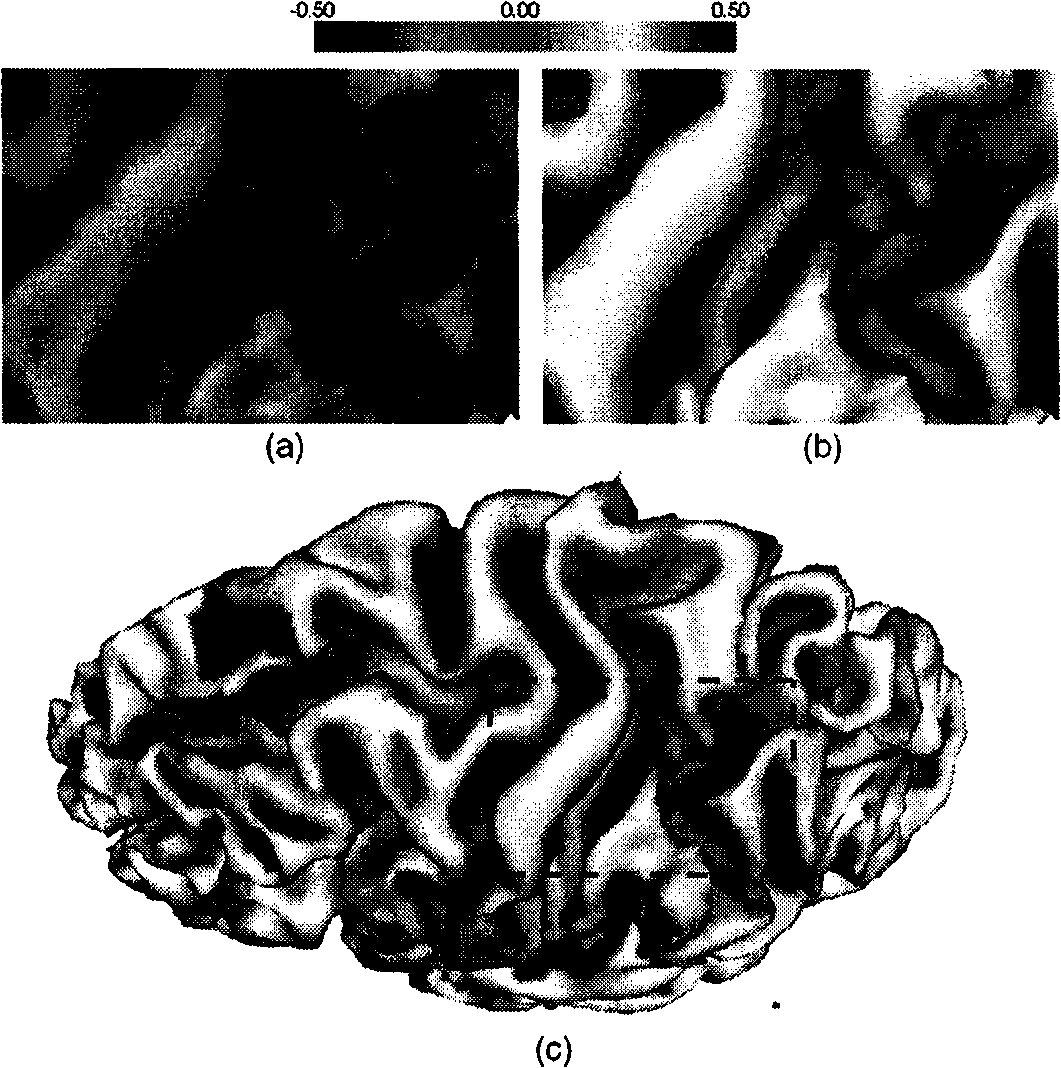Method for segmenting sulus regions on surface of pallium of a three-dimensional cerebral magnetic resonance image
A magnetic resonance image and cerebral cortex technology, applied in the field of medical image processing, can solve the problems of not being able to distinguish brain sulci and gyrus areas well, heuristic merging rules are difficult to control, and brain sulcus areas are difficult to control.
- Summary
- Abstract
- Description
- Claims
- Application Information
AI Technical Summary
Problems solved by technology
Method used
Image
Examples
Embodiment Construction
[0028] Now in conjunction with embodiment, accompanying drawing, the present invention will be further described:
[0029] According to the segmentation method of the brain sulcus region on the surface of the cerebral cortex based on the maximum principal curvature and the hidden Markov random field expectation maximization model proposed by the present invention, we have implemented a brain sulcus region segmentation prototype system with C++ language. The source of the image data is: three-dimensional brain MRI images of normal people in reality.
[0030] Firstly, the three-dimensional brain MRI image is preprocessed and the surface of the cerebral cortex is reconstructed: including removing the braincase and non-brain tissue, and performing brain tissue segmentation on the brain image (segmented into three types of white matter, gray matter, and cerebrospinal fluid), and after tissue segmentation Reconstructing the geometry in the brain image results in an accurate, topolog...
PUM
 Login to View More
Login to View More Abstract
Description
Claims
Application Information
 Login to View More
Login to View More - R&D
- Intellectual Property
- Life Sciences
- Materials
- Tech Scout
- Unparalleled Data Quality
- Higher Quality Content
- 60% Fewer Hallucinations
Browse by: Latest US Patents, China's latest patents, Technical Efficacy Thesaurus, Application Domain, Technology Topic, Popular Technical Reports.
© 2025 PatSnap. All rights reserved.Legal|Privacy policy|Modern Slavery Act Transparency Statement|Sitemap|About US| Contact US: help@patsnap.com



